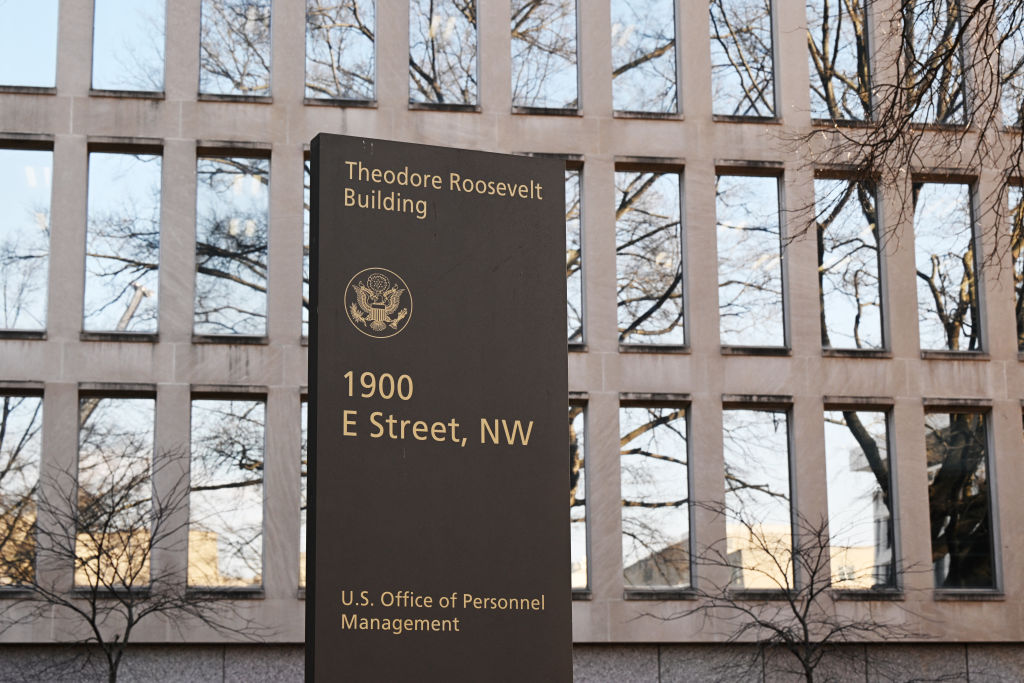Originally published Postal insurance program risks ‘operational failure’ due to OPM staffing shortages on by https://federalnewsnetwork.com/management/2025/07/postal-insurance-program-risks-operational-failure-due-to-opm-staffing-shortages/ at Federal News Network
https://federalnewsnetwork.com/wp-content/uploads/2025/03/GettyImages-2197101727.jpg
Staffing vacancies and funding losses at the Office of Personnel Management are putting the near-new Postal Service Health Benefits program at risk of an “operational failure,” according to OPM’s inspector general office.
A “flash” OIG audit report published earlier this month warned that OPM’s new health insurance program covering about 2 million Postal employees, annuitants and their family members, is facing “critical resource issues,” just a few months ahead of this year’s Open Season. That’s in light of the workforce losses and restructuring that have taken place at the agency under the Trump administration.
The July 2 report found that OPM currently has just three employees out of the 11 total positions it determined it would need to manage the PSHB program’s central enrollment platform, which all PSHB participants must use to enroll and make changes to their health insurance.
Those employees, housed under OPM’s Office of the Chief Information Officer, are tasked with running the enrollment platform, which was a new advent for the Postal insurance program. OPM had previously planned to expand the centralized PSHB platform to eventually replace the decentralized legacy enrollment system for the Federal Employees Health Benefits (FEHB) program.
But staffing to manage the PSHB enrollment platform has fluctuated over the last year, according to the OIG report. During 2024, there were seven employees on that team, and the agency had been attempting to recruit four more employees to reach the 11 positions needed within the OCIO component. OPM made one job offer in early January, the OIG said, but rescinded that offer once President Donald Trump’s governmentwide hiring freeze took effect on his first day in office. OPM then put its remaining recruitment efforts on hold.
Following the hiring freeze, four of the seven OCIO employees who had been working on the enrollment platform subsequently resigned from their jobs through the deferred resignation program (DRP). That left just three of 11 positions filled, the OIG said.
With just three employees, OPM then tasked two other IT specialists at the agency to help manage the PSHB enrollment platform. But that was only a “temporary solution,” the IG said. After a short time, both IT specialists also took DRP offers and left the agency.
OPM’s inspector general is now urging the agency to take “immediate action” to address the staffing gaps, which the OIG said could lead to downstream effects.
“Without skilled personnel, the data platform is at risk of ceasing to [operate], causing other system failures and limiting the functionality of the implemented PSHB program processes and systems,” the IG said. “OPM has not ensured that the systems it implemented for the PSHB program will remain fully staffed, supported and funded during its workforce optimization initiative.”
The staffing challenges aren’t limited to only the PSHB program. A separate Government Accountability Office report found that recent OPM vacancies have also led to an indefinite suspension of fraud risk assessments in the FEHB program.
In response to the OIG’s findings, Shane Stevens, current associate director of healthcare and insurance at OPM, outlined his office’s plans for restructuring.
“We have made changes in staff workloads and assignments as needed to maintain and operate systems, including the health benefits data platform, that are necessary for program operations,” Stevens said. “We will make future staffing adjustments if required for ongoing support of the health benefits data platform and other related systems.”
After a combination of reductions in force and voluntary separations over the last several months, OPM is on track to lose over 1,000 employees — about one-third of its total workforce — by the end of the year. Those staffing losses have affected virtually all of the agency’s components, including OPM’s healthcare and insurance office, which runs both the PSHB and FEHB programs.
OPM’s healthcare and insurance office lost a total of 80 employees this year, an agency spokesperson told Federal News Network. The losses come from a combination of 60 employees who took the DRP, and another 20 who left through either standard attrition or retirement, or who were laid off during the probationary terminations. All separations in the healthcare and insurance office were voluntary — the OPM component did not undergo any reductions in force this year, the spokesperson said.
On top of the staffing vacancies, the IG also said OPM is facing budget issues with the PSHB program, and that the agency has no clear back-up funding plan for PSHB.
OPM previously received a $24 million budget anomaly in 2024, which provided the agency with additional funding for standing up the PSHB program for its inaugural plan year. Plan year 2025 was the first time nearly 2 million Postal employees and retirees enrolled in the new PSHB program. The program was a requirement under the 2022 Postal Service Reform Act, which gave OPM a deadline of 2025 to set up a separate health insurance program for USPS employees and annuitants.
But under the full-year continuing resolution for fiscal 2025, OPM was unable to maintain the extra funding in its budget for managing the PSHB program.
At the same time, GOP leaders on the House Appropriations Committee are eyeing further budget cuts for OPM in 2026. Republicans are proposing a budget of roughly $422 million for OPM for the upcoming budget cycle, which would put the agency about $26 million below currently enacted spending levels.
An OPM spokesperson said while the agency “largely agrees” with the OIG’s findings, OPM has taken several actions more recently that weren’t included in the July 2 report. OPM pointed out, for instance, that after not securing the $24 million funding request in the 2025 continuing resolution, the agency pivoted by identifying $14 million in savings that it then allocated toward PSHB. The savings were primarily derived from payroll reductions under the agency’s hiring freeze, as well as “additional contract savings,” the spokesperson told Federal News Network.
Additionally, OPM said it has taken steps to modify the “scope in contracts” that support the Postal insurance program. The agency also said it’s using contracts to help manage the underlying systems for PSHB. That includes the health benefits data platform, which supports PSHB enrollments.
“OPM is committed to the ongoing success of the PSHB program and to the delivery of world-class benefits to federal and USPS employees and annuitants and their family members,” the spokesperson said.
The OIG report comes a few months ahead of Open Season for federal employees and retirees in both the FEHB and PSHB programs. This year’s Open Season will run from Nov. 10 to Dec. 8.
But the OIG said, “if the PSHB program processes and systems cease operations or cannot be replaced with similar system functionality, the PSHB program will be unable to process future qualifying life events, upcoming 2025 Open Season transactions and expand central enrollment capabilities to the entire FEHB program, as intended.”
If you would like to contact this reporter about recent changes in the federal government, please email [email protected] or reach out on Signal at drewfriedman.11
Copyright
© 2025 Federal News Network. All rights reserved. This website is not intended for users located within the European Economic Area.
Originally published Postal insurance program risks ‘operational failure’ due to OPM staffing shortages on by https://federalnewsnetwork.com/management/2025/07/postal-insurance-program-risks-operational-failure-due-to-opm-staffing-shortages/ at Federal News Network
Originally published Federal News Network

